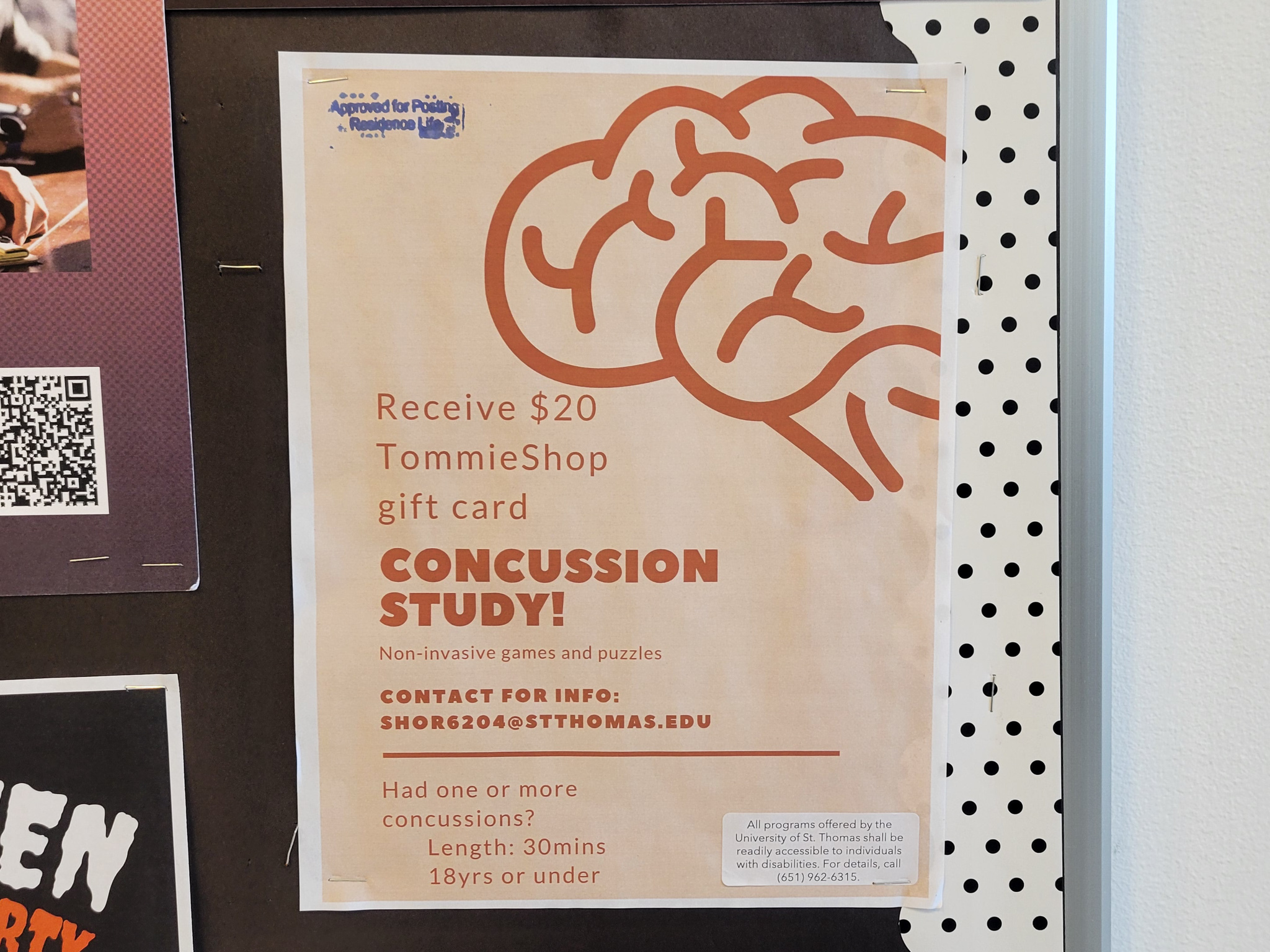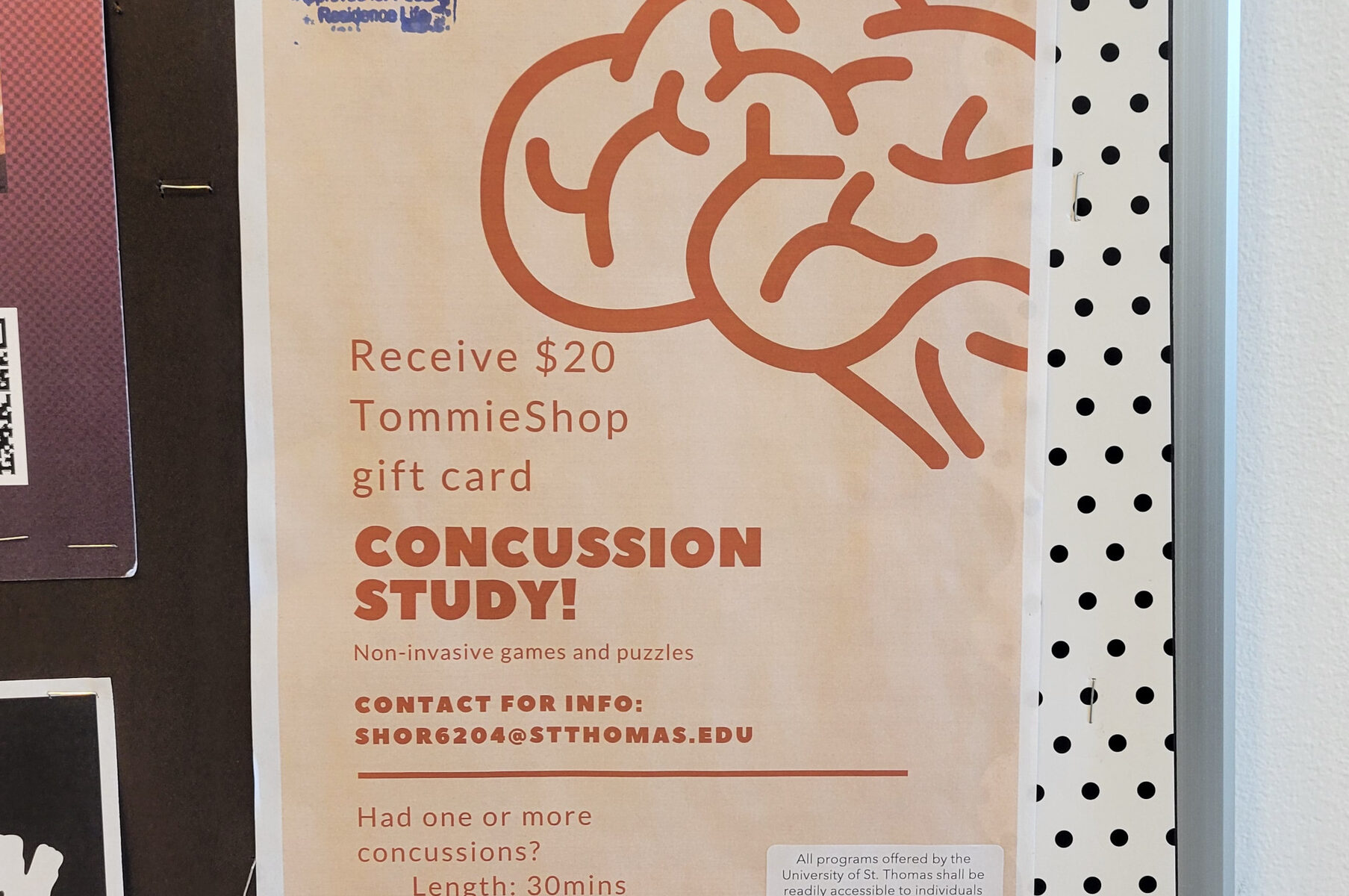
St. Thomas junior exercise science major Julia Short has been conducting a study on the effects of concussions on simple, everyday tasks over the past four months on the St. Thomas campus.
The study seeks to discover the effects concussions have on fine motor skills, which are “essential for everyday tasks from picking up a pencil and writing to being able to read,” according to Short.
“To my knowledge, there has been very little information looking specifically at post-concussive fine motor skills in adolescents,” Short wrote in an email to TommieMedia.
Short anticipates that there will be gaps in performance between the groups, but she is attempting to find out more specifically about where those gaps may be. Short wrote that she hopes that the data she receives from the study can help guide future research or new treatments for concussions and other minor traumatic brain injuries.
Short has been working on this study since June and wrote that she said she hopes to finish by Dec. 1.
To raise student interest in volunteering for the study, Short put up posters in each first-year residence hall, in Koch Commons and outside of the athletics department in October. She has also sent the posters out to the hockey and basketball teams.
The posters call for students who have had one or more concussions to participate in “non-invasive games and puzzles.” According to Short, these will be done in order to test five different types of motor skills: fine motor, fine motor integration, manual dexterity, bilateral coordination and balance.
The fine motor test consists of filling in circles and stars, drawing lines in crooked and curved paths, connecting dots, folding paper and cutting out a circle. The fine motor integration test involves copying circles and squares, as well as wavy lines, stars and diamonds.
The manual dexterity test involves sorting cards and stringing blocks together. The bilateral coordination test includes doing jumping jacks, jumping in place and tapping the feet and fingers. Lastly, the balance test includes walking on a line, standing on one leg, and standing on a balance beam.
“Given the rise in concussion rates in youth, this research is not only important, but timely,” professor Brett Bruininks, Short’s adviser on the study, wrote in an email to TommieMedia.
Miles Schiffer can be reached at schi9629@stthomas.edu.

